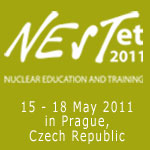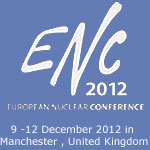

Statement about the Japanese Nuclear Accident
Bernard Bonin, Chairman of the ENS High Scientific Council,
Vladimir Slugen, ENS President
18 March 2011
The information gathered from the Japanese authorities permit to draw a rough picture of the sequence of events that led to the Fukushima nuclear accident. Among the 6 reactors at Tokyo Electric Power Company's (Tepco's) East coast Fukushima Daiichi nuclear power plant, reactors 1, 2 and 3 were in operation when the magnitude 9.0 earthquake struck. During the earthquake, the safety rods were automatically inserted in the three running reactors, stopping the chain reaction. At the same time, the grid power supply was blown out, and the auxiliary reactor core cooling system started normally, providing temporary cooling to the reactors. The same scenario then applied to the three reactors. At the time of the shutdown, the decay heat that needed to be removed from the cores amounted to about 7% of the nominal power of the reactors. Unfortunately, the 7 to 10 meter tsunami wave that hit the coast in the plant area after the earthquake seems to have caused the failure of the heat sink necessary to cool the reactors on a long-term basis. The cooling of the reactors then depended on the vaporisation of the water available in the reactor vessel and in the other reservoirs in the plant. The steam produced inside the reactor vessel was condensed in the condensation vessel, whose temperature and pressure began to rise slowly. A few tens of hours later, it was decided to vent some steam outside this vessel in order to reduce the pressure. Unfortunately, the steam appeared to contain some hydrogen, produced by the oxidation of the overheated fuel cladding. This hydrogen, vented in the top part of the reactors buildings, exploded when it came into contact with air.
At this stage, the presence of hydrogen and of volatile fission products like iodine and caesium in the released steam suggested that the temperature of the fuel was such that severe damage of the fuel claddings might have taken place inside the reactor vessel.
Pumping seawater into the reactors was decided as an ultimate measure to cool the reactors, to maintain the integrity of the reactor and containment vessels, and to confine the radioactivity. This procedure seems to have succeeded so far in reactors 1 and 3. A confinement leak in reactor 2 containment structure has been dreaded, but was not confirmed as of March 18th.
As another dramatic consequence of the earthquake, the storage pools which contain the spent fuel of reactors lost some of their water. Consequently, the spent fuel rods might have been insufficiently cooled and exposed to air. This might have resulted in heating of the spent fuel, with severe degradation of the fuel zirconium alloy cladding and subsequent release of part of the volatile fission products it contains into the atmosphere. A high level of radioactivity was measured around reactor 4.
The local population has been evacuated in time, and does not seem to have received radiation doses liable to induce health effects.
It is still premature to assess the possible consequences of the accident. For reactors 1, 2, 3, the amount of released radioactivity will depend on the resistance of the confinement vessels, and it is hoped that the ongoing procedure to cool the reactor cores will finally succeed, as the heat produced by the cores decreases every day. The outcome will also depend on the ability of the operators to refill and cool the pools containing the spent fuel.
One can note that, contrary to the previous nuclear accidents, Three Mile Island and Tchernobyl, a major external hazard (earthquake and tsunami) is the primary cause of the accident.
It should be stressed that the magnitude of the tsunami that struck Japan was beyond the design value to which the reactors were supposed to withstand. It will be the task of seismologists and earth scientists to determine if the probability of occurrence of such extreme events have really been underestimated during the reactors design, or if these events are so exceptional that the residual risk could a priori be considered acceptable.
Nuclear power plants have proven their value to society in Japan and elsewhere. The recent events have also shown the associated risks. In the future public debate that will certainly take place in democratic countries about the use of nuclear energy, it will probably be difficult to weigh with serenity the advantages against the risks of this form of energy.
The European Nuclear Society expresses its deepest thoughts to the Japanese population.
Bernard Bonin, ENS High Scientific Council, Vladimir Slugen, ENS President
|





